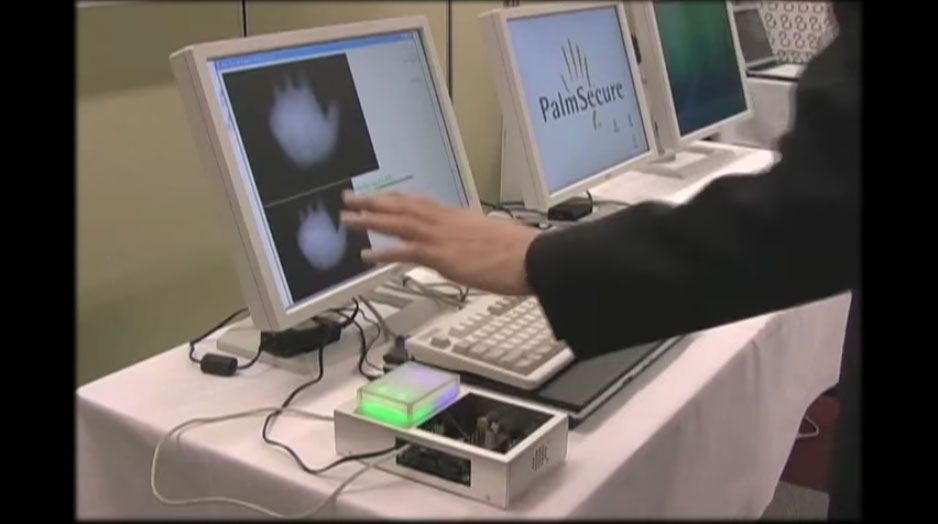You’re as Unique as the Veins in Your Hands
A visit to Fujitsu’s research and development lab to see their vein-based biometric system

Eliza Strickland: It turns out that the pattern of veins in your hand is just as unique to you as the pattern of skin on your fingertip. I visited Fujitsu’s research and development lab in Tokyo to learn about their vein-based biometric technology.
In this set-up, the system is used to verify identity: to prove that you are who you say you are.
Takashi Shinzaki, Fujitsu biometric research: This sensor detects the palm vein pattern by using infrared illumination.
Eliza Strickland: The module shines near-infrared light onto a person’s hand. The deoxygenated blood in the veins absorbs the near-infrared light, while the rest of the hand lets the light pass through. A sensor in the module records the image of the hand, where the veins show up as dark lines. Then a software program compares the image against the template on record for that individual.
Takashi Shinzaki: In this system you have stored a template of your palm veins? Yes.
Eliza Strickland: Then the program announces whether or not there’s a match. It shows access denied.
Shigehisa Mori: Red color means access denied. So you are not Shinzaki [laughter].
Eliza Strickland: Your vein pattern is also a more secure identifier than your fingerprints, which can be lifted from any smooth surface and reproduced. Because your veins are inside your palm, no one can see or copy them.
In Japan, many banks already use vein-scanning technology as an added security measure in their ATMs. The Bank of Tokyo-Mitsubishi UFJ was the first to deploy the system, in 2004.
Shinzaki also showed me the company’s next-generation biometric identification system, which uses both palm veins and fingerprints.
Takashi Shinzaki: So when I press my hand on this sensor, 3 fingerprints and one palm vein pattern will be captured.
Eliza Strickland: This system doesn’t just verify that you are who you say you are. The extra biometric data allows it to pluck your identity from a database containing millions of records. One day, this could allow a customer in a shop to buy a magazine just by placing his hand on a sensor. And the R&D lab is still experimenting with new imaging systems that could be used for more precise identification.
For IEEE Spectrum, I’m Eliza Strickland.
Eliza Strickland is a senior editor at IEEE Spectrum, where she covers AI, biomedical engineering, and other topics. She holds a master’s degree in journalism from Columbia University.